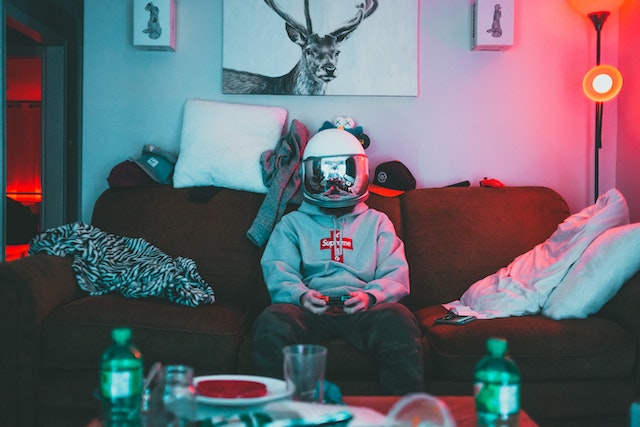
In the grand tapestry of human curiosity, few realms captivate the imagination like the cosmos. The boundless expanse of space, speckled with stars, planets, and galaxies, has beckoned adventurers for centuries. Today, the melding of technology and human ingenuity has given rise to a new frontier of exploration: virtual reality experiences of space. Embarking on a journey beyond Earth, we delve into the awe-inspiring world of interactive VR encounters that bring the wonders of space exploration closer than ever.
Unveiling the Cosmic Odyssey: Space Explorers’ Dream
Gazing up at the night sky has always sparked our yearning to know more about the universe we inhabit. Space exploration is not just a scientific endeavor; it’s a testament to human curiosity and our innate drive to push boundaries. Virtual reality has ushered in a golden age of immersive experiences, allowing us to step into the shoes of space pioneers, witness breathtaking celestial phenomena, and comprehend the enormity of the cosmos.
The Significance of Space Exploration: Why It Matters
“Why is space exploration important?” This question reverberates through time, and its answer resonates with our fundamental quest for knowledge and progress. Space exploration yields insights that transcend the cosmos itself. From understanding Earth’s origins to unraveling the mysteries of distant planets, these endeavors pave the way for scientific breakthroughs, technological advancements, and even philosophical contemplation.
Through the Eyes of Astronauts: An Immersive Journey
Virtual reality transports us from our earthly confines to the International Space Station (ISS), offering a glimpse into astronauts’ lives. Imagine floating in microgravity, conducting experiments, and marveling at Earth’s beauty from orbit. VR simulations allow us to experience astronaut training, spacewalks, and docking maneuvers, providing a taste of the challenges and triumphs of space travel.
Starry Nights Made Tangible: Planetariums in VR
Planetariums have long been gateways to the stars, but VR transforms these hallowed halls into boundless cosmic realms. With a VR headset, you can tour our solar system, fly past Jupiter’s stormy clouds, or land on Mars’ rusty surface. These experiences foster a deep connection with the cosmos, enabling us to witness the dance of celestial bodies up close.
Lunar Odyssey: Exploring the Moon Virtually
Setting foot on the Moon was a giant leap for humanity, and VR allows us to take that leap anew. Wander the lunar surface, inspect the regolith, and gaze at Earth from the Moon’s desolate landscapes. This immersive journey revives the spirit of the Apollo missions and offers a unique perspective on our home planet.
Voyage to the Red Planet: Mars in VR
Mars has always fascinated us with its potential as a second home. While physical travel to Mars remains a distant dream, VR lets us tread its rusty plains and rocky terrain. Traverse Valles Marineris, the largest canyon in the solar system, and stand before the towering Olympus Mons. These experiences ignite our curiosity about the mysteries that await us on the Red Planet.
Stellar Nurseries: Birthplaces of Stars in VR
Witnessing the birth of stars and the formation of galaxies is a privilege reserved for astronomers and space telescopes. However, VR puts us at the center of stellar nurseries, where colossal clouds of gas and dust give birth to luminous giants. Traverse nebulae, witness supernovae, and grasp the intricate beauty of the cosmos’ birth and rebirth.
Cosmic Time Travel: Witnessing Ancient Events
Space exploration often doubles as time travel, allowing us to peer into the past through the light of distant stars. VR transports us to events that unfolded eons ago. Witness the death throes of massive stars, the collision of galaxies, and the birth of quasars, all of which offer a glimpse into the universe’s history.
Celestial Mechanics Unveiled: Understanding Orbital Dynamics
Orbital mechanics may seem complex, but VR simplifies this arcane science. Visualizing orbits and gravitational interactions becomes intuitive when you can manipulate celestial bodies with a wave of your hand. These experiences foster an understanding of Earth’s delicate dance with the Moon, planets, and other cosmic companions.
Building the Future: VR’s Role in Space Education
As we delve deeper into the cosmos, the importance of education becomes paramount. VR’s immersive nature has the power to captivate young minds and inspire the next generation of astronomers, engineers, and space enthusiasts. Engaging VR simulations allow students to explore the cosmos firsthand, igniting a passion for learning about the universe.
Final Words
In the mesmerizing realm of interactive virtual reality, the cosmos is within reach like never before. Through the lens of VR, we’ve ventured beyond Earth, standing shoulder to shoulder with astronauts, roaming alien landscapes, and witnessing cosmic events. The melding of technology and our innate curiosity has yielded a new era of space exploration—one where the universe unfolds in our living rooms.
Commonly Asked Questions
Q1: Can VR experiences truly capture the essence of space exploration?
Absolutely. VR’s immersive nature recreates the sights and sensations of space, offering a taste of what astronauts encounter.
Q2: How does space exploration benefit humanity beyond curiosity?
Space exploration drives technological innovation, fosters international collaboration, and yields solutions to global challenges.
Q3: Are VR experiences of space suitable for all ages?
Yes, many VR experiences are designed to be family-friendly, offering educational and entertaining content for all ages.
Q4: Can VR training prepare future astronauts for space missions?
Indeed, VR training enhances astronauts’ preparedness by simulating space conditions and various mission scenarios.
Q5: What’s the future of VR in space exploration?
The future is promising. VR will likely play a crucial role in mission planning, astronaut training, and public engagement, bringing us even closer to the cosmos.









